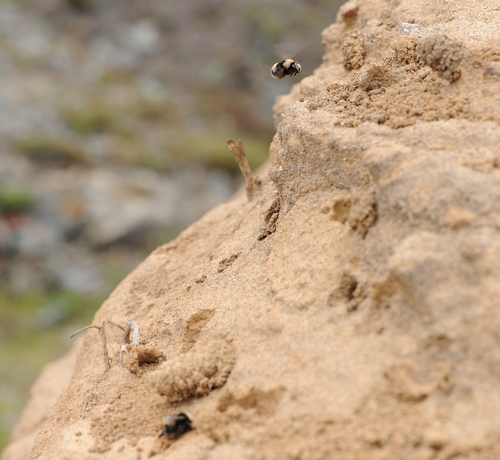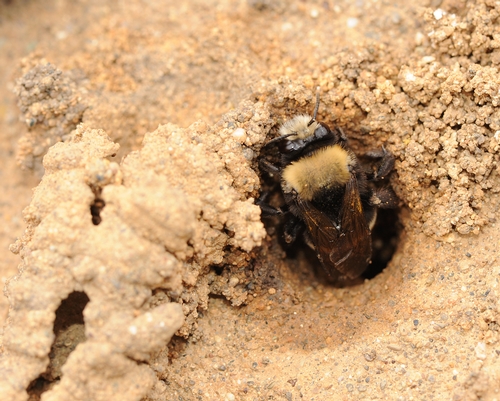Jul 27, 2010
Do you dig digger bees (Anthophora bomboides stanfordiana)?
They're populating the sandy cliffs of Bodega Head, Sonoma County. A sure sign of their presence: dense clusters of turrets.
When they're not foraging among the wild radish (genus Raphanus), lupine (genus Lupinus) and other plants, these ground-dwelling bees are digging nests and rearing their young.
"The female sucks up fresh water from nearby, stores it in her crop--like honey bees store nectar--for transport to the nest," said native pollinator specialist Robbin Thorp, emeritus professor of entomology at the University of California, Davis.
"She regurgitates it on the sandstone, and excavates the moistened soil," he said. "She carries out the mud and makes the entrance turret with it."
The digger bees are sometimes referred to as "alternative pollinators," but they're all members of the Apidae family, which includes honey bees (the super pollinators), bumble bees, carpenter bees, sunflower bees, orchid bees, cuckoo bees and the like.
They're populating the sandy cliffs of Bodega Head, Sonoma County. A sure sign of their presence: dense clusters of turrets.
When they're not foraging among the wild radish (genus Raphanus), lupine (genus Lupinus) and other plants, these ground-dwelling bees are digging nests and rearing their young.
"The female sucks up fresh water from nearby, stores it in her crop--like honey bees store nectar--for transport to the nest," said native pollinator specialist Robbin Thorp, emeritus professor of entomology at the University of California, Davis.
"She regurgitates it on the sandstone, and excavates the moistened soil," he said. "She carries out the mud and makes the entrance turret with it."
The digger bees are sometimes referred to as "alternative pollinators," but they're all members of the Apidae family, which includes honey bees (the super pollinators), bumble bees, carpenter bees, sunflower bees, orchid bees, cuckoo bees and the like.
Attached Images:

Digger Bees

Building a Nest

Mud Carrier